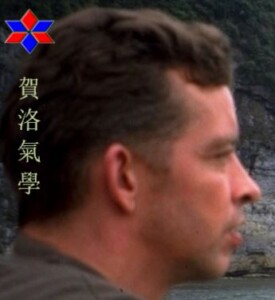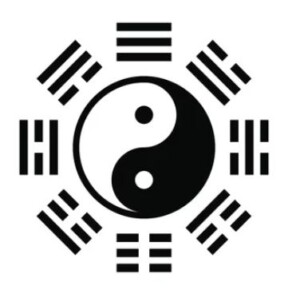When teaching beginner students about Feng Shui, even I have been guilty of referring to Qi (ch’i) as “energy.” Usually, I offer a handful of descriptions to bring more dimension to this elusive concept of Qi, by also describing it as “life force” energy, or “air currents.” In truth, we should be able to describe Qi more fluidly and accurately, at least in the English language, because English has more descriptive words than just about any other language. For example, instead of a single word to describe the color red, we have umpteen different words to distinguish red as cardinal, maroon, burgundy, garnet, cranberry, rose, fuscia, scarlet, ruby, etc.
Energy manifests in many forms, but energy is just one facet of Qi. To quote Metaphysician and Nine Star Ki master Heluo (www.heluo.nl):, “Qi is the “bigger bucket” and energy is the smaller “bucket” that fits into the larger bucket of Qi.” The comparisons are endless, such as our solar system being the smaller bucket which fits inside the larger bucket of the galaxy we are in. And the galaxies fit inside the larger bucket of the Universe. With the pantheistic nature of Hinduism, there are many “gods” and demi-gods with attributes of the one God. We could say that there are many forms of energy, all under the umbrella of the one God energy. One does not need to be religious to appreciate that there is a substance, which is beyond Time and Space, the glue that holds the Universe together.

In Heluo’s metaphysical teachings, he emphasizes how one must strive to teach with definitions more than analogies because if the analogy is incorrect, it can breed more incorrect information until the serious subject of metaphysics gets reduced to just metaphors and fables. When a person lies, they need to maintain the cover up of the original lie with more lies. And while most people teach metaphysics, including Feng Shui, in earnest, if we start with a fairy tale or a lie, and not a true definition, it is likely that the misconception will spawn more misconceptions.
One New Age example is the BTB School of Feng Shui, where the back left hand corner of every home is supposed to be a “Wealth Corner.” Some naïve person may then think it is logical to conclude that the back left hand corner of a garden is also a Wealth Corner and let that dictate or restrict what colors of flowers are permitted in that area of the yard. From the same misguided School, if someone thinks that placing the water element in the North sector of the home is good for prosperity, they may build on the misconception and think it is always a good idea to put water outside to the north. The misconceptions may further spin out by telling certain individuals that they must face the north when seated, if one beleives that water or north is the only magnet for prosperity energy.
Energy can change, transmute and manifest in an infinite number of ways. This is the essence of Five Element Theory, where the Five “Agents” cycle through to become one another. The Five Elements referred to here are Water, Wood, Fire, Earth, and Metal. Qi can manifest as Water one moment and then morph into Wood the next moment.
Qi is the supplier, which ignites the energy, but not the energy itself. In spiritual realms we sometimes refer to angels or god-like beings, but they are not the Godhead, the totality of Everything. So, when we use the simplest of short-hand to just say “Qi= Energy,” we are doing a disservice to the ultimate understanding of Qi and its all-encompassing and sustaining magnitude.
When we refer to everything as “energy,” we neglect to breakdown the nuance of different types of energy, which is essential if one wants to match the correct adjustment or correct reaction to the type of energy we are dealing with. If your car has run out of gas, it won’t start running again if you fill the tank with a calorie dense meal of protein, fats and carbohydrates. That is a different type of energy, not suitable for the vehicle. In Chinese Metaphysics, we learn about “Heaven Qi, Man Qi, and Earth Qi.” Said differently, there are energies which fit into the “buckets” of Helio-centric, Ego-centric, or Geo-centric domains. When people don’t communicate well, we sometimes say they are speaking a different language, or “not on the same wavelength.”
We have to understand what domain we are experiencing or addressing and not just gloss over the type of energy we are referencing as if all manifestations are the same. When people study more than one of the Five Arts in Chinese metaphysics, they get a glimpse of these distinctions. While the Wood element in Feng Shui may be represented with real wooden objects and live plants, the Wood Phase from a Geo-centric context may manifest as the season of Spring (conveniently in the Northern Hemisphere) since “geo” is the domain of the literal Earth. More important is that Wood represents the expansion of Qi in relation to the Sun and Earth dynamics of Aphelion. This affects the whole planet, North and South Hemispheres alike. This can be a Heliocentric association with the Wood phase.
In Feng Shui practice, we say the New Year begins around February 4th (Solar calendar, not the lunar calendar) and the Ancients called this date “Spring Begins.” It is not literally the season of Spring on either hemisphere, but it is a noteworthy celestial expansion period.
The Ego-centric experience of the Wood energy may have more to do with the liver or the feet since it is body-centric. The Helio-centric aspect of Wood may identify those energies related to expansive, centrifugal movement and new beginnings. Thus, to say “Wood=Green Color” is just short hand and too limited in scope and understanding.
Some of the misconceptions we have with regards to metaphysics stem from how we perceive the world, reality, and time. Is our thinking linear or circular, literal or multi-dimensional? What we also have learned is that the geniuses from Eras past often put their profound concepts into codes, sometimes appearing so simple that people misinterpreted them as being primitive when nothing could be further from the truth. The Tai Ji (Tai Chi) symbol, also known as the Yin-Yang Symbol is one example of a symbol that gets reduced to some very simple analogies and comparisons, when it is actually a multi-dimensional “merkabah,” which reveals more when it is viewed that way instead of in a two-dimensional context. Try imagining the Yin Yang Symbol as if you were looking down on it from the North pole perspective instead of flat on a page. Try looking at the Yin Yang Symbol as if you were standing behind it, seeing through it from back to front and even more is revealed when discussing many concepts, including ‘sitting’ and ‘facing.’ From the phases of Yin and Yang illustrated in the symbol, spill out the trigrams used in Feng Shui and the Hexagrams used for Yi Jing analysis.

Likewise, we sometimes only describe yin and yang concepts as opposites and extremes, such as male vs. female or hot vs. cold. When we focus only on the opposites and the polarity, we miss out on the inseparable unity, back to the all-encompassing Qi, Timeless and beyond space as we know it. When we only look at the differences posed by Yin and Yang, this gets us into trouble in real world relationships as well, when we focus only on our differences instead of our commonality and what unites us.
Author: Kartar Diamond
Company: Feng Shui Solutions ®
From the Metaphysical Musings Blog Series
